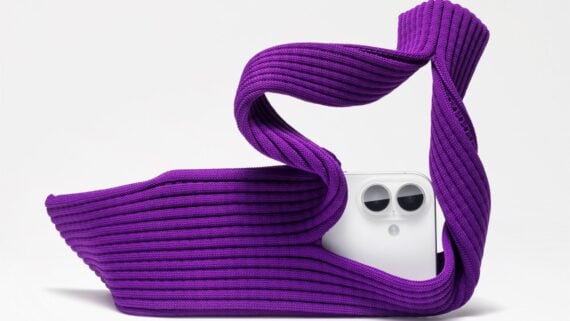A streaming media player can open up worlds of new TV entertainment options — and maybe convince some users to cut the cable cord. Amazon, Apple, Google, and Roku streaming devices dominate the market. The good news is that no matter which brand you’re loyal to, all will let you access popular media streaming services like Netflix, Amazon Prime, Hulu, Pandora, and many more. Some of them will also allow you to integrate virtual assistants, like Amazon’s Alexa and Google Home, or stream 4K and HDR (high dynamic range) content. We consulted expert reviews and scoured major retail sites for consumer feedback in order to identify the best media streaming devices for under $75, as well as the best setups for Apple fans and gamers.
Roku Streaming Stick Plus Review
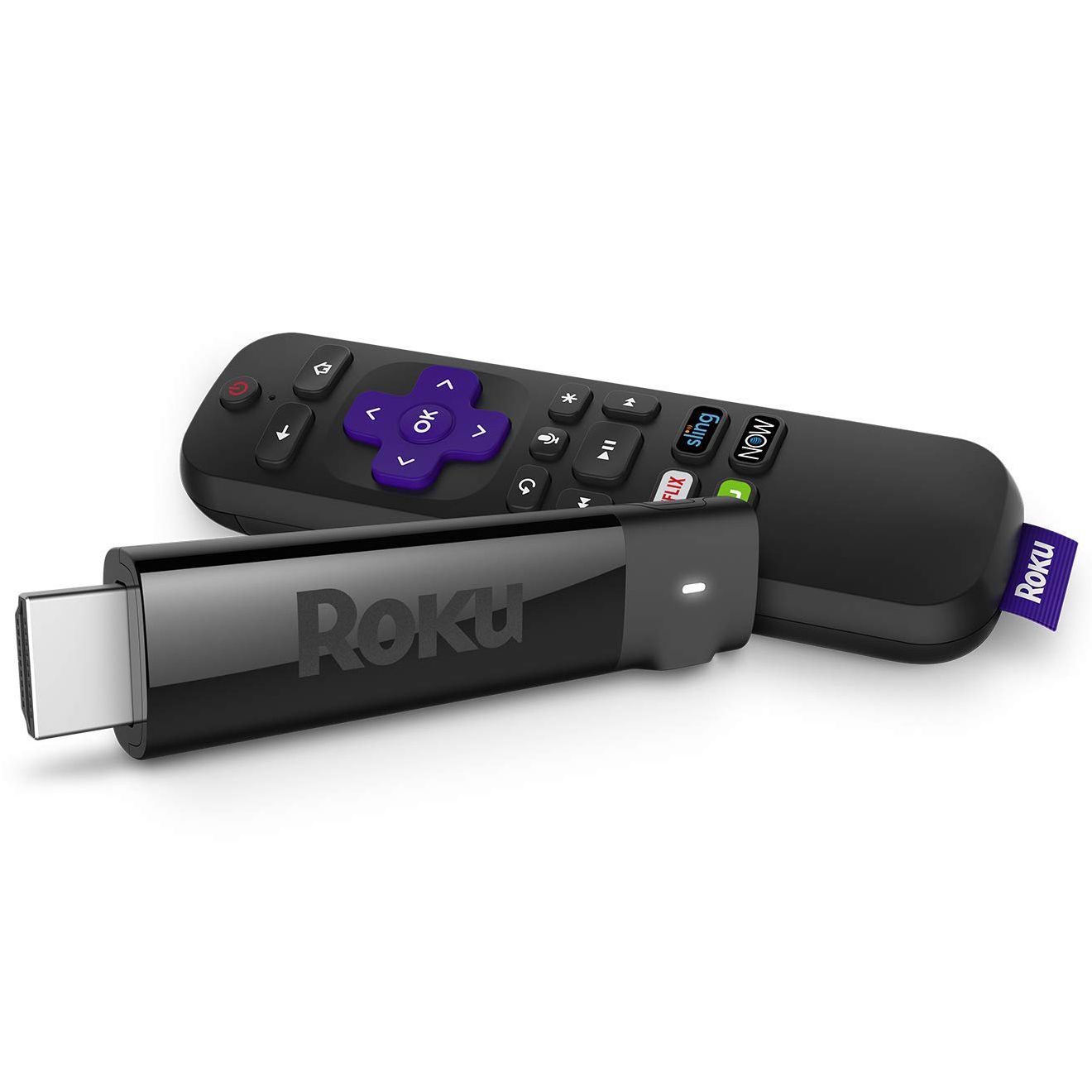
Best Cheap 4K Media Streaming Device
Pros:
- More content options (especially 4K and HDR) than Apple, Amazon, and Google streaming devices.
- Included remote has a voice-control feature.
- On-screen menu is simple, intuitive, and very easy to navigate, owners say.
- Screen mirroring for Android and Windows devices; iOS users can access select personal content via the Roku app.
Cons:
- No Ethernet port for faster streaming speeds; some reports from owners of content freezing up.
- No access to Spotify.
- Voice search doesn’t always work, some reviewers say.
Takeaway: This Roku streaming stick has long been a favorite of experts and earns an impressive 9.2 rating from CNET. Although it’s no longer the absolute cheapest 4K-ready device, it’s nearly one-third the cost of the new Apple TV 4K, and the best option for all but the most devoted Apple fans. (For what it’s worth, CNET gives the Apple TV 4K only an 8.7.) The Roku Streaming Stick Plus is loaded with content choices, more cross-platform-friendly than its competition (Google Play and Amazon Prime Video are readily available here), and said to offer better video quality than all but the premium-priced Apple TV. What you don’t get for the money is a virtual assistant like Alexa or Siri. Nor is there an Ethernet port or Dolby Vision support, which limits access to 4K HDR content, although there is support for Dolby Atmos surround sound. For many reviewers, Roku gets enough right with this basic but remarkably robust little device that it remains the clear top choice among 4K media players.
Amazon Fire TV Stick Review
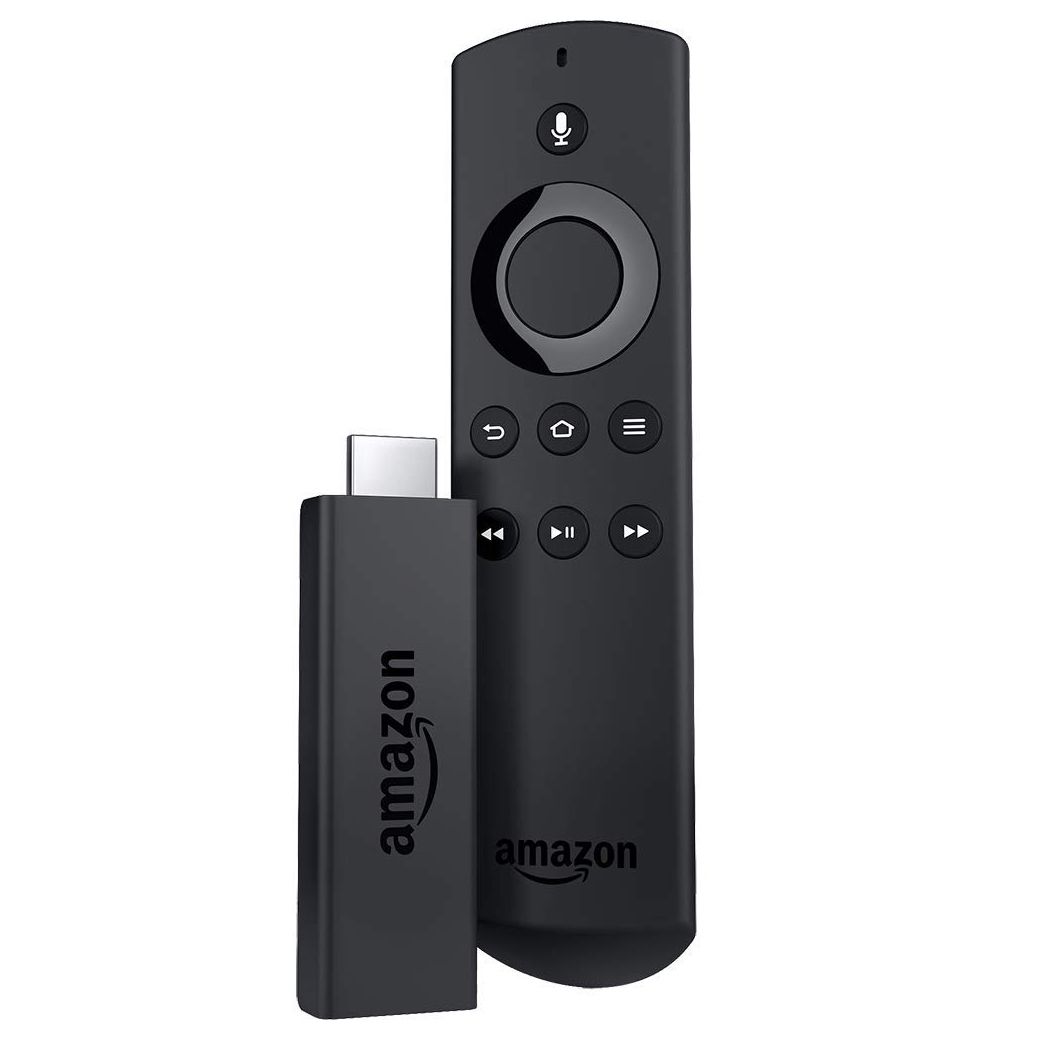
Best Cheap Streaming Device
Pros:
- Links with other Amazon devices and content easily, owners say.
- Alexa-enabled voice remote.
- Screen mirroring with Android and other Amazon devices.
- Very fast; users say they never have to wait for content to load.
Cons:
- No official app for Google Play; YouTube app no longer available.
- No 4K or HDR support.
Takeaway: If all you want to do is watch your favorite Amazon shows on your TV, and you don’t care about 4K or HDR content, then the Amazon Fire TV Stick is your best bet, reviewers say. It’s a few dollars more than similar models from Roku and Google but offers access to nearly the same array of apps (the Google Play store and YouTube are glaring exceptions). We read a handful of complaints from owners who say the on-screen menu isn’t very easy to use, and some say the Fire TV Stick makes it challenging to find non-Amazon apps. Still, reviews are overwhelmingly positive, if not glowing. The seamless integration with Amazon’s digital world, including Alexa, packed into a portable stick make this streaming media player a favorite of many consumers.
Apple TV 4K Review
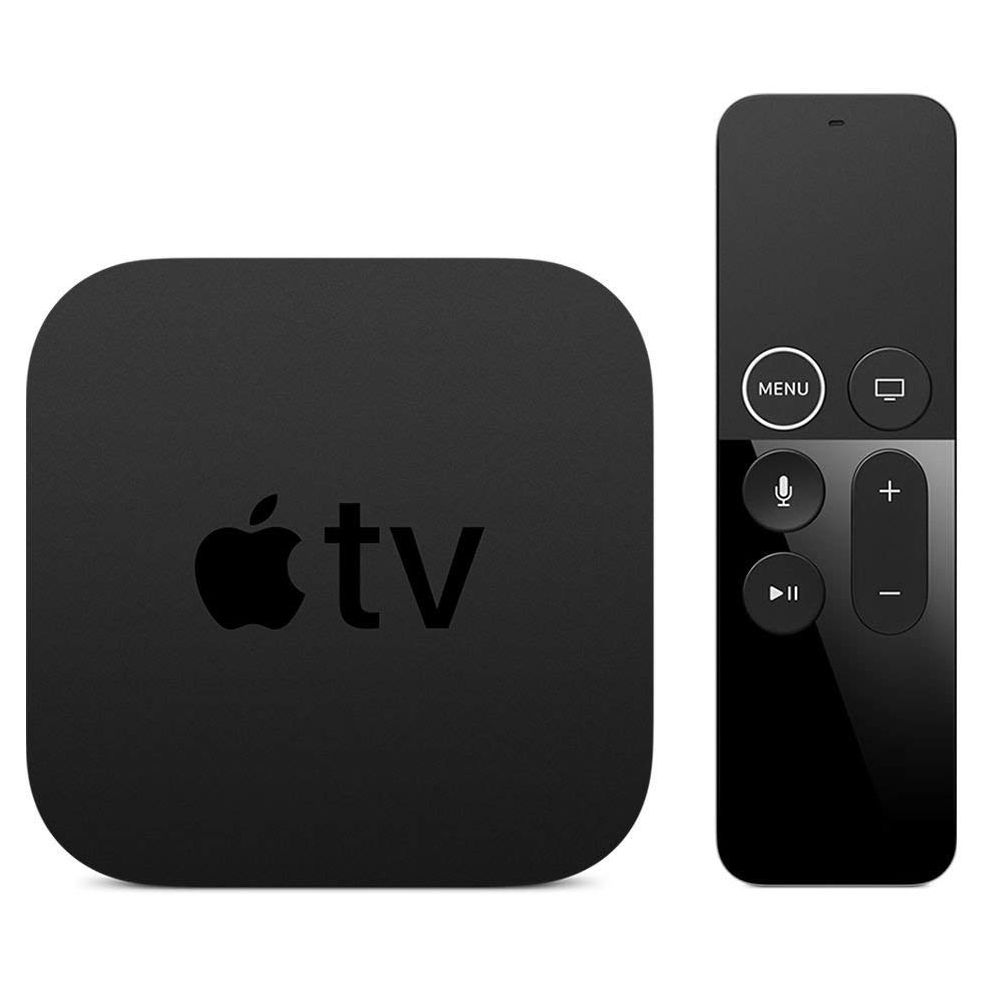
Best Streaming Device for Apple Users
Pros:
- Seamlessly integrates with Apple mobile devices and Macs and provides access to iTunes inventory.
- Streams 4K and HDR content, with support for both HDR10 and Dolby Vision.
- Motion remote with Siri voice controls and search options.
- Ethernet output for faster streaming.
- Sleek design and a slick interface that shows availability and trending content across services.
Cons:
- Among the most expensive streaming media players on the market.
- No official app for Google Play or Spotify.
- Can’t play YouTube videos in 4K or HDR.
Takeaway: Apple fans are fiercely loyal to the brand in nearly all its pursuits, and media streaming is no different. Although the Apple TV 4K is definitely on the pricier side, it has the ability to mirror iOS mobile devices and Mac laptops on a TV. Users have access to their iTunes libraries and can store their media on the 32GB hard drive, or opt for the 64GB version (est. price: $199). ITunes has an early lead in the amount of 4K content available. If you don’t care about 4K or HDR playback (or the recent addition of hardware that supports Dolby Atmos surround sound) but want to remain in the Apple universe, you could opt for the older Apple TV 4 (est. price: $149).
Nvidia Shield Review
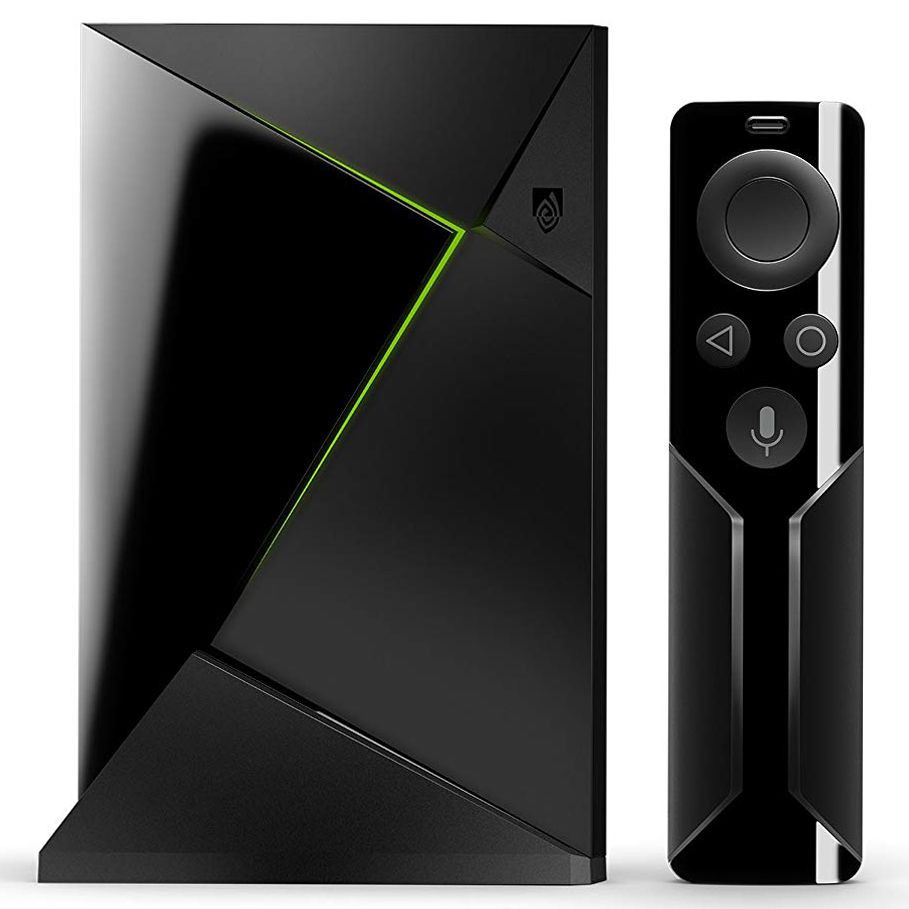
Best Streaming Device for Gamers
Pros:
- Dedicated gaming ecosystem with exclusive content and a custom controller.
- With built-in Google Chromecast, it mirrors Android devices and can display content from Chrome web browsers.
- Streams 4K and HDR media.
- Included remote has a voice feature and Google Assistant integration.
- Apps available for Google Play, Spotify, Amazon Video, and YouTube.
- Built-in Ethernet port and lots of power.
Cons:
- No support for iTunes.
- Can’t match the performance of consoles like the Xbox One or PlayStation 4.
- Games from GeForce Now service are streamed, so there can be lag.
- Remote lacks many standard touch controls and leaves many users frustrated; complaints of lags and unresponsiveness.
Takeaway: All streaming media players from big brands offer access to games through their app stores, but none can be confused for a dedicated gaming device. The Nvidia Shield is the exception to that rule, streaming games from PC to TV while offering access to thousands of titles via GeForce Now, Android, and Gamestream. Users can also stream TV shows, movies, and music from popular apps like Netflix and Hulu. It uses the Android operating system, so it plays nicely with any Google or Android device. Throw in an Amazon app, voice commands, smart home control, and 4K and HDR capability, and you’ve got a lineup that many other streaming media players can’t beat. Some reviewers say the Nvidia Shield is trying to be too many things to too many people. Although it has its own exclusive gaming ecosystem, it can’t match rivals Sony and XBox for selection or processing power. And while it competes with Apple TVs on price, it can’t match their functionality and user-friendliness in terms of interface. Still, for the person who enjoys gaming and wants a bit of the best of both worlds, the Shield is a good, if pricey, option.
Amazon Fire TV Stick 4K Review
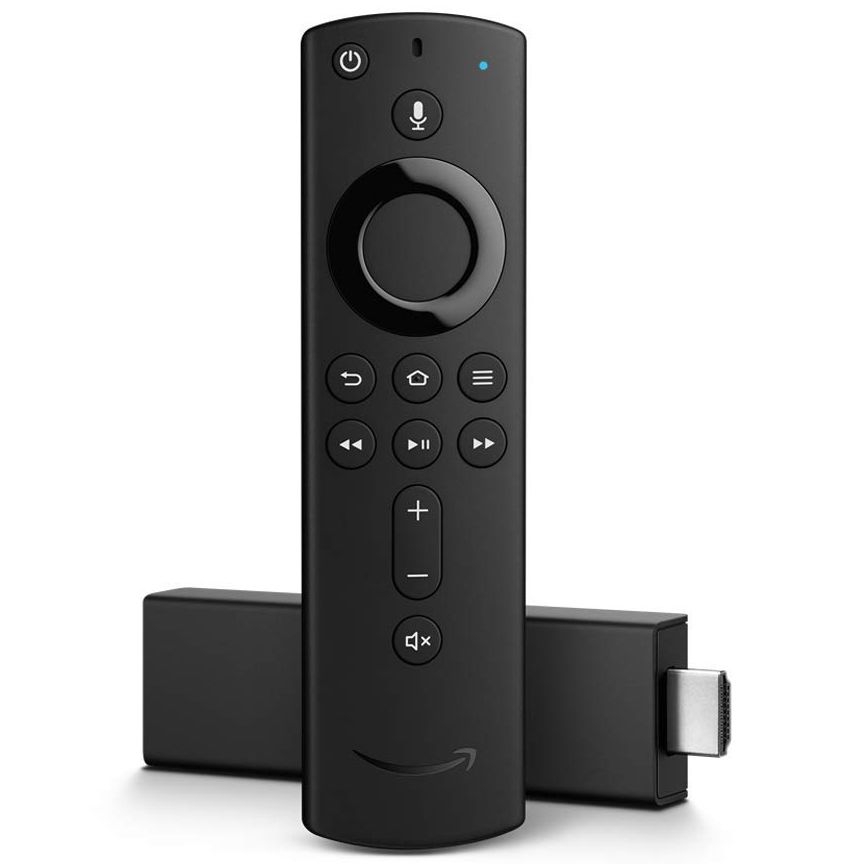
Good 4K Media Streaming Device
Pros:
- Alexa-enabled voice controls are easy to use, reviewers say.
- Seamlessly integrates the Amazon universe of services.
- Streams 4K and HDR content.
Pros:
- No official app for Google Play or YouTube.
- Some users report compatibility issues.
- Doesn’t support screen mirroring.
- Less 4K content than Roku or Apple TV.
Takeaway: The latest 4K version of Amazon’s Fire TV Stick offers users all of the same streaming features and content as its cheaper sibling, plus the ability to watch ultra-high-definition and HDR movies and shows. There are also some new features, including an upgraded remote that can control other devices like your TV or home theater sound system. It also has some of the same drawbacks of the previous model, reviewers say. Notably, it lacks apps from rival Google, and several owners complain the Fire Stick doesn’t work with their TV sets or TV providers like DirecTV. Others say that 4K versions of their favorite shows and movies either weren’t available or were difficult to stream without glitches. Some also lament the loss of the ability to mirror devices onscreen. Those complaints aside, most users — especially those already committed to Amazon’s media universe — are satisfied with the upgraded Fire Stick.
Google Chromecast Review
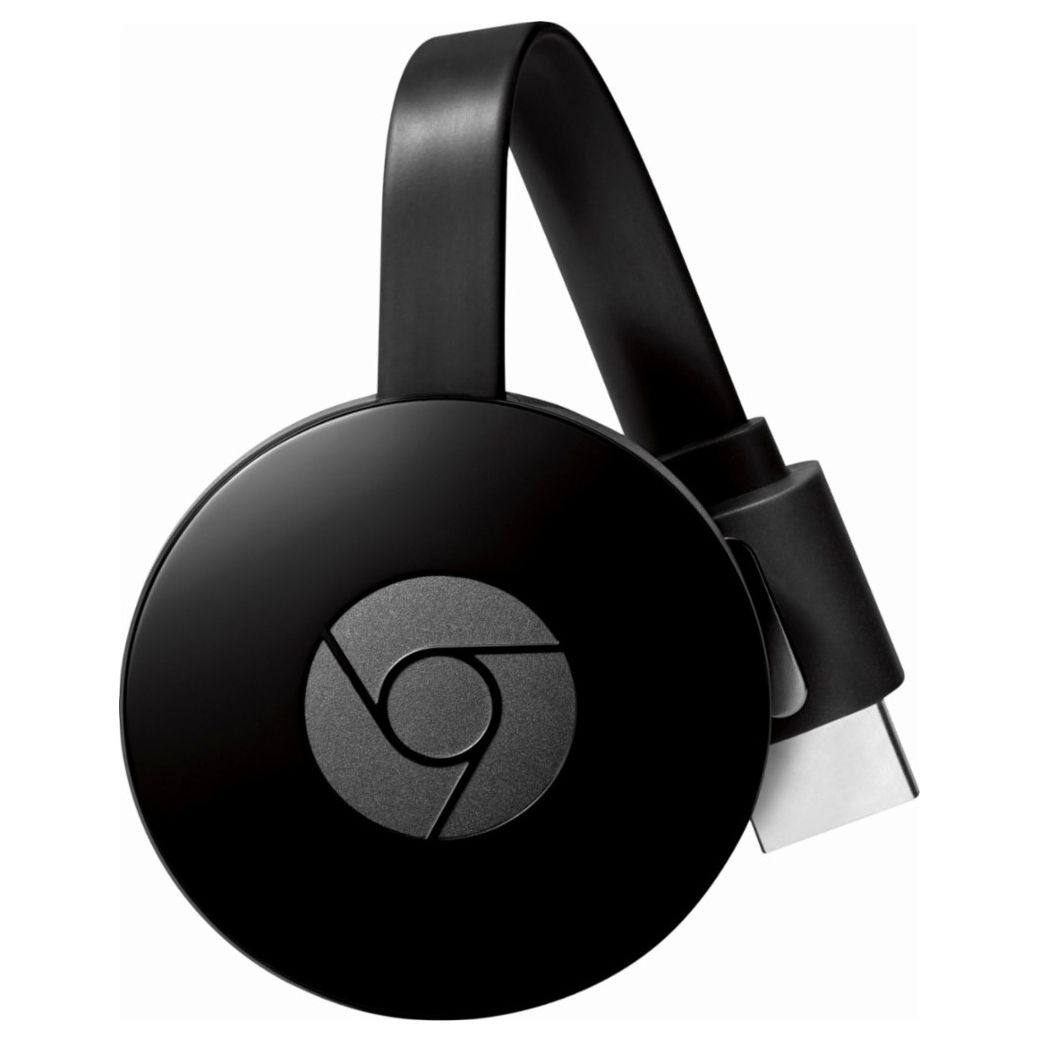
Good Cheap Streaming Device
Pros:
- Syncs with the Google universe, including Home, Pixel, and Nest.
- Mirrors the displays on Android devices to a TV.
- Casts web content to a TV via the Chrome browser.
- Easy access to Google Play media.
- Unobtrusive and easily portable.
Cons:
- No Amazon Prime Video app, and no iTunes access without third-party apps.
- No 4K or HDR support.
- Scattered owner complaints about frozen or delayed streaming.
Takeaway: Google Chromecast takes a different approach to media streaming than its competitors. Instead of a dedicated remote control to navigate an on-screen menu, this small dongle employs a phone, tablet, or PC to control TV content through the Google Home app. Setting up and syncing devices is fairly simple, reviewers say, but may be a little confusing for those who are not particularly tech-savvy. With its capabilities and low price, it’s an ideal choice for those who are deep in the Google techniverse; have a large library of music, movies, and shows on Google Play; or who own a Pixel phone. Google loyalists who want to stream 4K and HDR TV shows and movies must upgrade to the Google Chromecast Ultra (est. price: $69). Non-loyalists who really just want to binge-watch Netflix should probably consider other options on our list.
Roku Express Plus Review
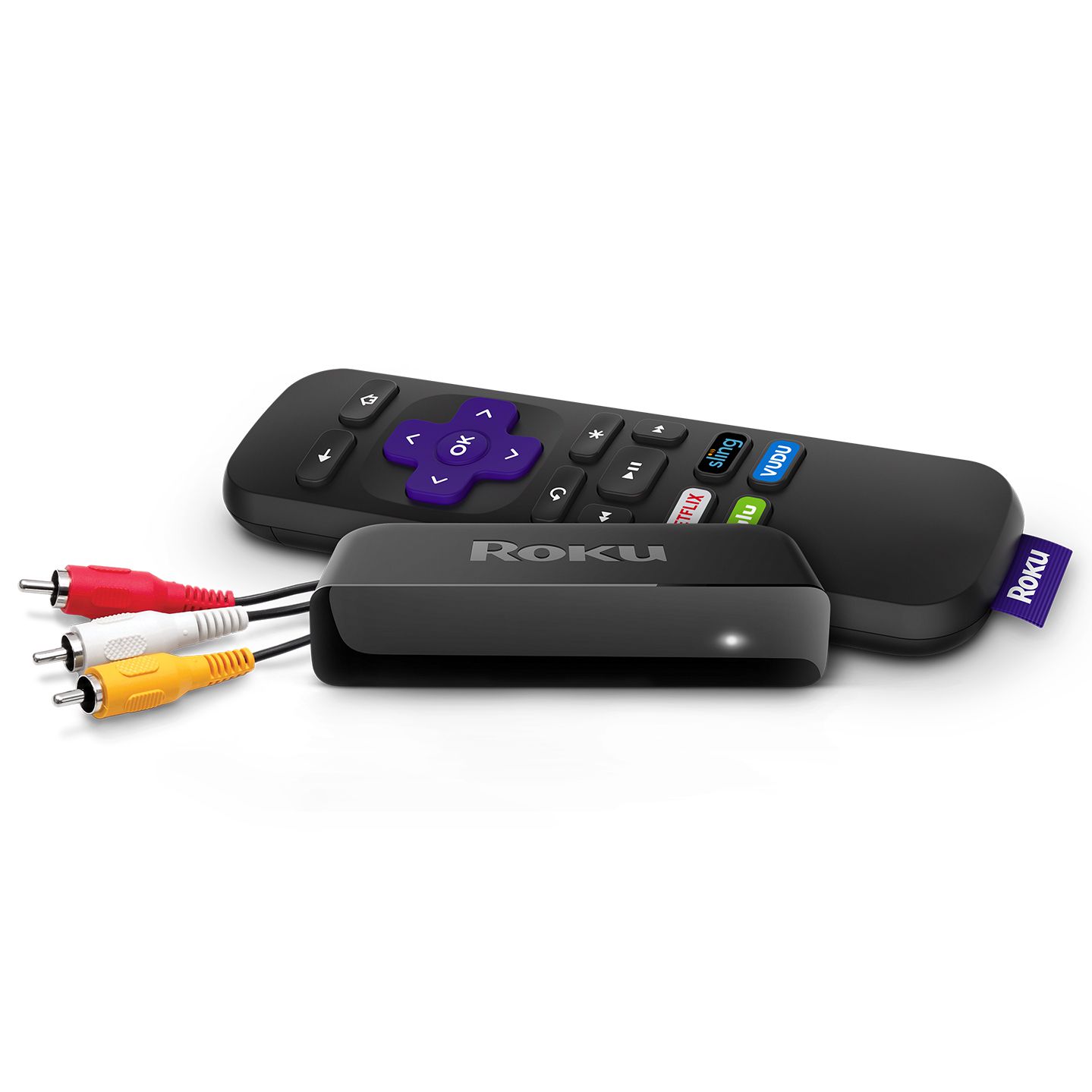
BONUS: Streaming Device for Older TVs
Pros:
- Designed for TVs without HDMI inputs, as well as HDTVs.
- Larger app library than Apple, Amazon, or Google.
- Relatively low price.
Cons:
- Can’t stream 4K or HDR content.
- Uses slower Wi-Fi b/g/n.
- No Spotify app.
Takeaway: We may live in a high-definition world, but there are still plenty of old standard-definition TVs lurking in basements, bedrooms, and spare rooms. These older TVs don’t have the HDMI inputs that most media streaming devices require, but the Roku Express Plus doesn’t care. It has composite A/V cables to send favorite TV shows and movies to an old-school set (plus an HDMI output so you can use it with an HDTV). Added benefit: The Roku mobile app lets users listen to music and shows with headphones, a nice feature when you don’t want to disturb other people. On the downside, this Roku is slower than other streaming devices, making it more likely that content may freeze or stutter.
Roku Premiere Plus Review
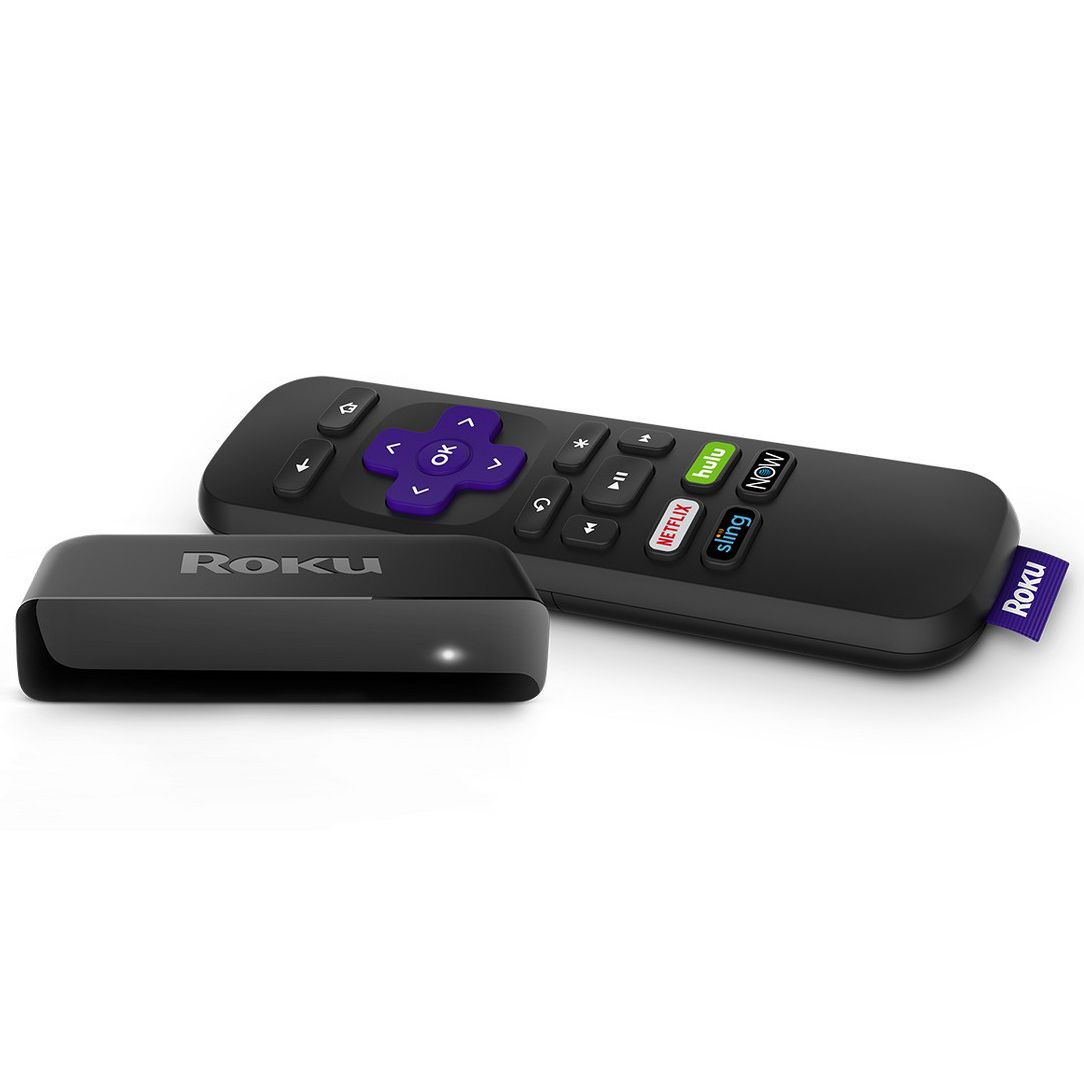
BONUS: Roku Bluetooth 4K Media Streaming Device
Est. Price: $49 | Buy it from Walmart
Pros:
- More content options than Apple, Amazon, and Google.
- Supports Google Assistant.
- Voice-controlled Bluetooth remote also can be used to adjust TV functions.
Cons:
- Doesn’t support some cutting-edge Wi-Fi networks and routers.
Takeaway: The new Premiere Plus is very similar to Roku’s Streaming Stick Plus with a couple of exceptions. First, the positives: The Premiere Plus, a Walmart exclusive, has an upgraded remote control that now can be used to adjust your TV’s functions (something the Streaming Stick’s remote can’t do); and it’s Bluetooth-enabled, meaning you don’t have to point the remote directly at your set in order for it to work. Better yet, this Roku is compatible with Google Assistant, so it can be used to control other smart home products like the Nest thermostat if you’re already wired into Google’s digital ecosystem. Another small improvement: The Roku has a dedicated menu item for free content. On the downside, the Premiere Plus doesn’t support faster 802.11ac internet connections like its cousin the Streaming Stick Plus, but most reviewers say this isn’t much of a drawback considering the many other perks.
Amazon Fire TV Cube Review
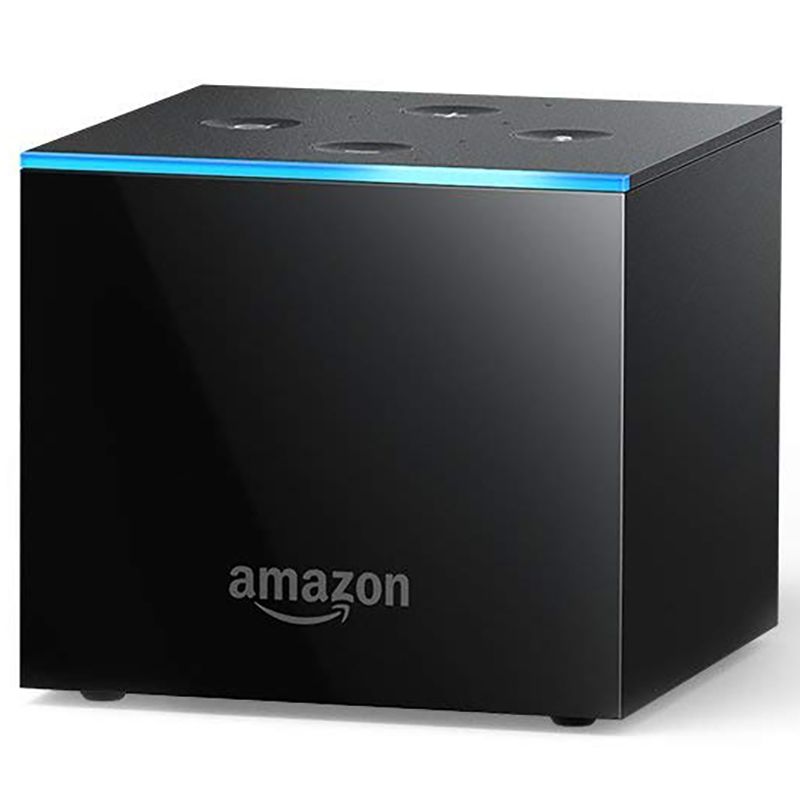
BONUS: Hands-Free Streaming Device
Pros:
- Alexa for your TV.
- Also controls TV and components including soundbar and receiver.
Cons:
- Voice controls don’t work with cable DVRs, other peripherals.
- No official app for Google Play, YouTube.
- Slow to respond to commands, and not always accurate, according to owners.
Takeaway: If you want to dive head-first into Amazon’s world of “smart home” products and make your TV a part of that ecosystem, Amazon’s Fire TV Cube will appeal. It’s definitely not cheap, and it doesn’t give you access to any media you can’t get with cheaper Fire streaming devices. What sets it apart is the fact that the Fire TV Cube is essentially an Alexa digital assistant that can also control your home theater setup (with a few exceptions, such as gaming consoles) and connect to compatible smart products like the Ring doorbell — all with simple voice commands. There’s also an Alexa-enabled remote included for those services that don’t support hands-free operation, but many say they’ve rarely had a use for it and are happy to leave behind the days of constantly hunting for lost controllers. That said, some users do complain that unless you speak very clearly, the Cube may not always respond accurately, and sometimes the processor can’t quite keep up, resulting in occasional lag time. Many reviewers also dislike the number of promotions and ads that appear on the Cube’s interface.
Choosing the Best Streaming Device
Do You Need a Streaming Device?
These days, many people own high-definition televisions, which have a built-in HDMI port that will support media streaming players, gaming devices, and laptops. The majority of HDTVs sold are “smart” sets, meaning they can connect to the Internet using the TV’s built-in browser. But, there are still good reasons to buy a streaming device even if you have a smart TV.
Compared to a dedicated media streaming device, most smart TV browsers and remote controls are not very user-friendly. You may have to hunt to find and install your favorite streaming apps, and sets may interrupt you in the middle of a show to install a software update, something that irks many users. If you watch a lot of TV and switch frequently between apps, a streaming device is the better choice, reviewers say. More importantly, you’ll have access to much more content via these devices than you would using a typical smart TV interface.
And, of course, there also are still a fair number of cheap HDTVs available that aren’t smart sets. If you want to stream TV and movies on these sets, you’ll definitely need a media device. If you still own an older standard-definition TV with composite video inputs, your options for streaming are limited to buying an HDMI-to-AV adapter or using the Roku Express Plus, link to capsule the only streaming player from the major brands that has AV outputs.
Choose Your Media Streaming Services
If all you want to do is binge-watch TV shows on Netflix or Amazon Prime, then just about any streaming player will do. But if you also want to integrate exclusive content or be able to control your other digital devices, then you’ll have to choose your streaming device more carefully to get the best streaming services. For instance, if you’re already a Prime member and also subscribe to exclusive services like Amazon Music Unlimited and have an Alexa digital assistant, then you’ll want to stick with one of Amazon’s streaming devices so you can access all of your content. The same goes for those who inhabit Apple’s media universe and want a service that can work with devices like iPads and iPhones, or those who are Google loyalists.
Make Sure Your Internet Connection Is Fast Enough
Even the best media player will behave badly if your home Internet service isn’t robust enough to support your streaming. At minimum, you’ll need around 5 megabits per second (Mbps) to stream high-def content to just one TV, though at that speed your media may sputter or stall. While SD streaming requires a bit less speed, certain services still recommend a 5 Mbps base threshold, and a home where more than one person is watching TV, playing online games, or surfing the web will likely need a connection speed of at least 10-25 Mbps, along with a dual-band wireless router that can juggle a family’s data demands.
What We Considered
In order to determine the best streaming media players for budget-conscious consumers and others, we first consulted professional review sites like PCMag, CNET, TechRadar, and Wirecutter to get an idea of what the experts have to say about the available array of devices and what potential buyers should be looking for in a player. We also read comments from hundreds of consumers on websites such as Amazon and Best Buy to assess the day-to-day performance of these devices. In general, both owners and experts are looking for the same thing in a good media player: ease of use and reliable access to their favorite movies, TV shows, and music.
Any good streaming device should at minimum allow you to watch high-definition TV and movies from your favorite content services. It should be easy to set up, with user-friendly controls and enough processing power to stream shows without stuttering or pausing. A cheap streaming device may come with a remote control, while pricier models have voice activation or an app for your phone. Media streamers may resemble small set-top boxes like the Apple TV 4K, thumb-drive-sized dongles like the Amazon Fire TV Stick, or larger dongles like the Google Chromecast, which looks like a small disc attached to a short cable. Most of these players require only a simple connection to your television’s HDMI input.
Support for 4K and HDR
All of the cheap streaming media players we recommend support high-definition video at 1080p resolution. Pricier models also support streaming 4K and HDR content, which is becoming more common as the price of these ultra-high-definition TVs drops. But if you don’t own a 4K TV and don’t plan on buying one, there’s no need to spend extra money on compatible streaming devices.
Available Content
Just because you buy a media streaming device doesn’t mean you’ve got instant access to endless content; many streaming services, like Hulu and Amazon Prime, will still require a subscription. And you’ll need to be a cable customer to access the apps for certain popular networks, like ESPN, AMC, TBS, and Bravo — otherwise you’ll need to pay extra for live TV streaming offered by Hulu, Sling TV, DIRECTV, and similar service providers. The good news, however, is that Apple, Amazon, Google, and Roku devices all offer apps for the most popular of these streaming sites and, of course, you’ll be able to easily sign into Netflix. Now, you can even get HBO on the internet via all of these streaming players (for a fee, of course).
You’ll also find apps for hundreds of networks that don’t require cable or live TV streaming, plus plenty of special-interest channels for movies, sports, news, kids’ programming, and more. The list of these niche apps will vary from streaming device to device. Roku has by far the largest selection of apps in its ecosystem, with more than 1,000 to choose from, including access to the Google Play store in addition to other a-la-carte services like Vudu and FandangoNow. Wirecutter notes that Roku’s superior app selection gives it an edge over every other streaming player.
There are a few common apps that you won’t find on every streaming device, however. Amazon and Google don’t necessarily play well together, and you won’t find Google Play on Amazon Fire TV or the Amazon Prime app on Google Chromecast. Likewise, you won’t find music app Spotify on Roku. Roku also can’t access iTunes content, which could be a sticking point for anyone deeply invested in Apple’s ecosystem. (As always, there are workarounds for most of these absences, but these hacks often take more tech savvy and more time than the average user is willing to invest.)
Device Compatibility
All the streaming media players we researched allow users to send content from a supported mobile device to a TV. With most current Roku players for example, you can directly “mirror” anything that appears on the display of an Android or Windows device. Screen mirroring is not supported for iPhones or iPads, which are limited to casting content from compatible apps, such as Netflix and YouTube. And iOS users who want to access personal media, such as photos, songs, and videos will need to use the Roku app or another third-party app to do so.
Similarly, Amazon’s Fire TV Stick will allow screen mirroring, but only from Android, Kindle, and other Fire devices that support Miracast. (Third-generation Fire TV boxes and the Fire TV Cube do not mirror displays.) Apple TV uses AirPlay to mirror the screens of iOS devices and Macs, but Android and Windows users will have to rely on compatible apps to get content from their devices up on their TVs.
While these sharing options typically exist to augment content already available on the streaming players themselves, Chromecast dongles rely entirely on users to source all content for streaming — the device works more like a transmitter between the TV and the users’ smartphones, tablets, or computers (which double as remotes) rather than as a standalone media player. The main draws of Google Chromecast: apps that support Google Cast abound across platforms (Android, iOS and Windows) and anything that can be accessed on a Chrome web browser can be cast onto a TV screen. Android users can also mirror their phone displays using the Google Home app.
Setup & Navigation
Getting one of these players set up should be plug-and-play simple, and in most cases it is. We only found scattered consumer complaints about setting up streaming players. Media player menus have also become incredibly easy to navigate across the board; even a cheap TV streaming device like Roku’s Express Plus has an intuitive menu that’s easy to use with the included remote. Most of the models we looked at have voice control, either with the remote or via a home digital assistant like Alexa. Navigation of Google’s Chromecast, which, again, relies exclusively on user devices, mostly works well, reviewers say.
Speed
It might not seem like these tiny boxes and dongles need beefy processors, but even some of the cheaper streaming players pack some serious computing power. The result is that apps load more quickly on newer players using a quad-core processor than on models that are less robust.
Internet connection is the other major component affecting speed and performance. When it comes to wireless connections, streaming players that support the 802.11ac wireless standard are the best. Streaming 4K content requires considerably more bandwidth; Netflix recommends 25 Mbps. Ideally, a 4K-capable media streamer should feature a wired Ethernet port to connect directly to routers for the fastest, most reliable internet connection.

